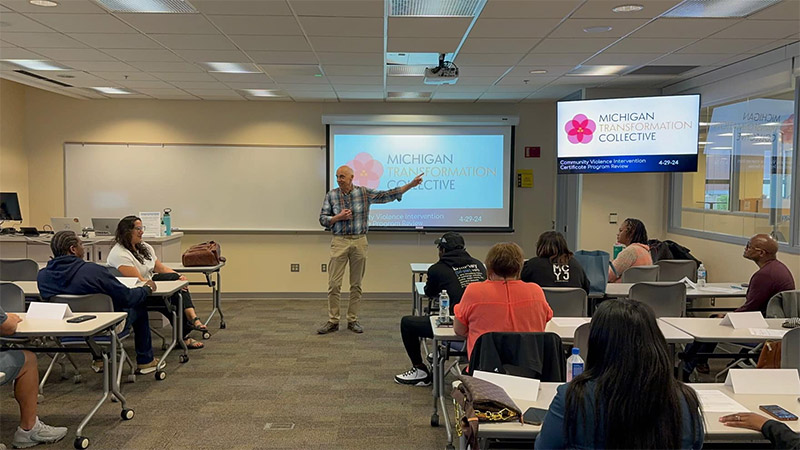From creating mindsets to sustainability…the work is never done.
Every executive and business owner sets out to achieve immediate results for accelerated performance and lasting change. A few make it big, some lose what they gain, and some never even come close to achieving desired results.
Culture is the key to moving an organization from a state of toleration for the status quo to an expectation of excellence where performance and change are maximized. Culture is the difference between someone showing up for work at 7:30 a.m. or 8:01 a.m. It’s not an easy ride, but when a culture of excellence is built within an organization or company, the executive or business owner creates capacity and a structure that empowers, engages and energizes his or her people.
Companies like Airbnb, Bain & Company, Guideware, HubSpot and Facebook get it right, according to the 2016 Best Places to Work list compiled by Glassdoor. This business-focused website annually honors companies across North America and parts of Europe; its honorees are voted by the people who know the companies best—their employees.
“Best culture.” “Incredible Place to Work.” “Amazing collaborative experience.”
That’s how employees at the companies, noted for their excellence on the list above, describe their place of work.
How would you describe yours?
If you find yourself not quite “there” yet—meaning that you are not ready to shout affirmative cheers from a megaphone in front of your company or organization’s main entrance—don’t give up.
Michele Serbenski, Associate Dean, Planning and Performance Excellence, for Western Michigan University Homer Stryker M.D. School of Medicine, offers insight on how to establish a culture of excellence. Her background includes service as an alumna Baldrige examiner and former Judge for Michigan Performance Excellence. Both roles stemmed in part from her experience with the leadership team at Bronson Methodist Hospital that not only pursued, but also achieved the 2005 Malcolm Baldrige National Quality Award. As of July 2011, in addition to strategy development and execution, Michele assumed oversight of the medical school’s accreditation and continuous quality improvement processes.
Create Mindsets for Excellence
“A work environment is a lot like a society, a little microcosm. It’s just the way of life in your little society,” says Serbenski.
The difference between a high performing culture and a low performing one is a culture that is intentionally created versus one that is accidentally created. “The key thing for leaders to think about if they want the institution to be a certain way, is that they need to make culture intentional, and understand that it’s their job to create the culture and foster it. Great leaders don’t just wake up one day, and go, ‘Oh, that’s the way we are,’” explains Serbenski.
The first step in building a corporate culture is to engage and align your people—lots of them, not just those at the C-level—in the process. “We did this at the medical school. To define what we wanted our culture to be, we engaged with employees, students, customers, and others that we identified to be part of our world.” Figure out who you want in the room, invite them, and start the dialogue. Depending upon how geographically accessible your target audience is, you may need to supplement the process with surveys or field trips or even studies of companies that you want to emulate to get the job done.
“We didn’t go in and say, ‘What should be our mission? What should be our vision? What should be our values?’ We did these input sessions where we gathered all this information, and then from there we synthesize the information down. Next, we brought our leadership group, which at that time was about 40 people, and anybody who supervises anybody else altogether in a series of retreats over a year. People had said so many different ‘words’ in the process, but we boiled them down and clustered them together. From those ‘words,’ we ended up developing our mission, vision, and values,” shares Serbenski.
Communication is the next step. It’s not enough to simply say that you have a mission, vision, and values. It’s not enough to write it down. It’s not enough to say it. Everyone must live the culture and understand what their roles and responsibilities are to achieve the organization’s collective goals. Michele encourages companies to communicate shared convictions in ways “that people can grab onto and understand it” whether it’s on the walls, a company handbook, or little cards that people can stick into their wallets or position on their desks as reminders.
Create Strategies for Excellence
Your hiring process can set you up for success if you identify candidate talents that support your culture early in the process. Existing employees can be strong supporters of the culture too—especially if they were part of the process that put the mindset of excellence in place.
Once you have your team and you have your defined culture, success becomes about building skills and proficiencies to grow your business. Encouraging collaboration and rewarding flexibility helps to ward off distractions that can cloud focus on organizational vision and goals. Paying particular attention to performance also promotes clarity.
As you build your culture, put your “focus on high and middle performers, but don’t ignore the low because, when you do, sometimes it frustrates the high and middle that others can get away with things,” warns Serbenski. Set high performance expectations. Then support, encourage, and reward those who master their areas. In high performance cultures, there is no place for low performers. “If low performers don’t step it up, and you’ve tried everything as an institution to work with them or move them to the right position,” Serbenski says it’s time for both the employer and employee to realize that “it’s a wrong fit.” Such individuals might be low performers in your organization, but “they’re going to be happier if they go someplace else where they can increase performance and possibly become middle or high performers.”
Create sustainability for excellence
Once you start seeing your team deliver excellence consistently, it’s time to hunker down for the long haul. Continually making excellence happen, as evidenced by “achieving desired sales, making accreditation happen, and winning awards,” takes an unwavering amount of energy and tenacity from a leader cautions Serbenski.
Serbenski concludes, “You are never done. Hopefully, you’re not always working over and over on the same things, but you’re never done. Just because you worked hard for two years doesn’t mean you can just let it ride on autopilot. Some people may think, ‘Hey, we got those (things) down pat, everything’s good. We’re a well-oiled machine here,’ but things (in the world) are changing too much. You always have to continue ‘raise the bar.’ Competition, change in the industry, cycles of improvement, and the right thing to do, all keep you on your toes. A leader’s job is never done.”
Communicate a Culture of Excellence
Explain your culture
Clearly outline how your culture enables your business strategy and why it matters.
Set behavior expectations
Lead by example and show how you want people to work together.
Educate your team
Make your culture part of new hire orientation, and offer training that supports the culture to all employees year-round.
Weave culture into everything you do
From how you greet customers to complete reports, reflect your culture in all actions and communications internally and externally.
Set accountability and metrics
Establish goals and a reporting structure that keep your team aligned and accountable for performance.
Enable culture ambassadors
Recognize your champions and let them inspire others.
Create opportunities
Let employees participate in your culture and reward innovators who take your culture boldly where it hasn’t gone before.




